Are you teaching To Kill a Mockingbird this year? Whether you view it as a treasured classic, or an outdated relic, I have some tips.
Today’s blog post will be a little different. I would typically start by sharing ideas for teaching the novel in question. However, I think To Kill a Mockingbird is ready for a curriculum overhaul. It’s a fictional story sharing the trauma of systemic racism through the eyes of a young White girl. Her father, an immortalized literary hero, didn’t even win the case. Why are we still teaching To Kill a Mockingbird? Why are we holding on to this novel?
I recommend NOT teaching To Kill a Mockingbird.
Not convinced? Let’s talk about it. While I never connected with TKAM, I know many teachers have fond memories of reading it as a child, and have a lot of emotions wrapped up in teaching the book. But we have to be honest with ourselves. It’s not progressive. And like The Help, a White author wrote it for a White audience, and regardless of Lee’s intentions, TKAM is one big White Savior trope. Worst of all, it’s often the only book in a school’s curriculum that addresses racial injustice. And I hope that even lovers of TKAM will agree that at the very least it should not be the lone perspective on race that we give to students.
I hope you will join me in removing TKAM from your curriculum. That said, I know that because of state and/or district requirements it’s not not an option for every teacher to just eliminate certain problematic texts. So today, while I encourage teachers to stop teaching To Kill a Mockingbird if they can, I will offer some solutions for those of you who still have TKAM as a required novel. Below you’ll find a few tips and resources, but you can find even more in my Rethinking the Classics: To Kill a Mockingbird resource that I compiled with Dr. Sheila Frye from Teaching Literary.
Pair it with something more representative
If you’d like to have discussions of systemic racism and issues of justice grounded in the real-world, the nonfiction book Just Mercy by Bryan Stevenson is perfect. Stevenson’s book is part-memoir and part-analysis of the justice system. The overarching narrative of the book is about one man, Walter McMillian, wrongly imprisoned for murder in 1986 and Stevenson’s years-long battle to free him from Death Row. This is a story of a real-life Black man written by his real-life Black attorney, and it is incredible. It even takes place in the same community as Harper Lee’s novel. Interwoven with McMillian’s story are chapters about the treatment of women, children, and the mentally ill in the justice system. This provides such a thorough view of the system while still using real people’s stories to ground the action. You can use either the young adult version or the original version – both would succeed in high school.
If you’re looking for coming-of-age stories, you could replace the novel with many YA choices. Author Jason Reynolds says, “I always say if my books are still being read forty years from now in schools, if they’re being taught as the books introducing young people to literacy in schools, I failed. Forty years from now, we ain’t figured out new books yet? Literary is living, it’s growing, it’s changing, it’s expanding, it’s evolving. People are living and growing and expanding and changing and evolving. Books have to continue to do the exact same thing in order for us to see eye-to-eye with the young people who they are trying to engage with.”
Have a classroom discussion on justice
Building Background: “What is Justice?” (3:00)
This video is a super quick introduction to justice that you can use to spark conversation in your students. Some core concepts introduced here are the goals of the American Justice System (as Fania Davis puts it, “Do harm to someone who has done harm to show that doing harm is wrong”), the impact on victims, and other alternatives (the Gullah “just law”).
Student-Centered Activity:
Facilitate a student discussion of justice. In our society, the most visible form of “justice” is punitive. What happens when students break the rules at school or at home? This can be a tough conversation, but turn concrete examples into general concepts: corporal punishment, exclusion, shame, etc. (Students can also work on generating a list in small groups, since that may allow them to feel more comfortable.) Once they have a list, ask students to imagine what they want the punishments to be. This requires students to think critically about the goals of justice for the victims, the perpetrators, and society. It is the best way to get to the core of what justice means in our students’ lives.
Video: “What is Transformative Justice?” (10:29)
Several practitioners of transformative justice talk about its scope and potential. One of the key takeaways from this video is that answering harm with harm does not move a community forward. In To Kill a Mockingbird, most readers believe Tom’s testimony that he didn’t harm Mayella. However, when we talk about justice in the classroom, we will encounter students who want to talk about “well, what if he did do it?” Discussing alternatives to punitive justice is important. Also, it helps break down the social construct that there’s only one way to serve justice.
Bring in some nonfiction
I recommend Just Mercy as a core text to replace To Kill a Mockingbird. But if you cannot get approval for new books, here are two chapters you could share as stand-alones. Each is 15 pages.
Chapter 1 of Just Mercy is called “Mockingbird Players” and introduces the Monroeville setting and the primary case of the book, that of Walter McMillian. Students will be able to connect the novel to real-life events that continue to happen.
Chapter 8 of Just Mercy by Bryan Stevenson is about the incarceration and execution of children. One story included is about Ian Manual, who shot Debbie Baigre when he was thirteen years old. In this video, students will hear in her own words that Baigre quickly forgave Ian and fought for his release. This is an interesting case because it questions the purpose of incarceration. If Ian was remorseful and a child with an under-developed prefrontal cortex, why was he sentenced to life in prison? Why was he viewed as irredeemable? And if his own victim wanted his release, why was he kept in jail?
Final Thoughts
I hope you took something useful out of my blog post on (not) teaching To Kill a Mockingbird. Does your district still require you to teach it? I’d love to hear how you’ve been adapting and supplementing for your students! Comment below so we can all learn!
Many teachers are working to diversify their curriculum to include more voices, and it’s been a big focus for me this year. I’ve been working with Dr. Sheila Frye (from Teaching Literacy) on a project called “Rethinking the Classics” to help teachers find supplemental texts and curriculum updates. So far, in addition to TKAM we’ve covered, The Giver, The Odyssey, The Outsiders, Romeo & Juliet, The Great Gatsby, and we have many more to come.
Do you have a specific required text that you’d like to make more inclusive? Reach out to me @nouvelle_ela and I’ll see if I can help 🙂

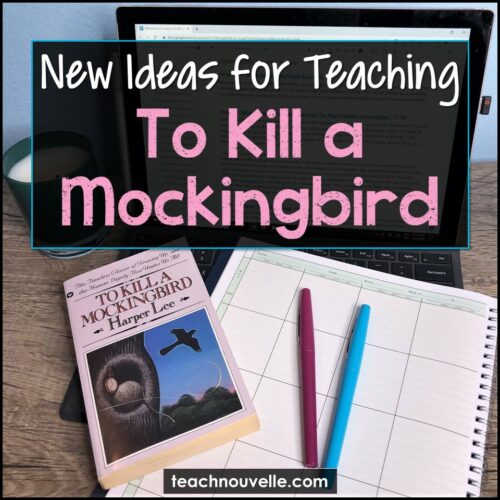
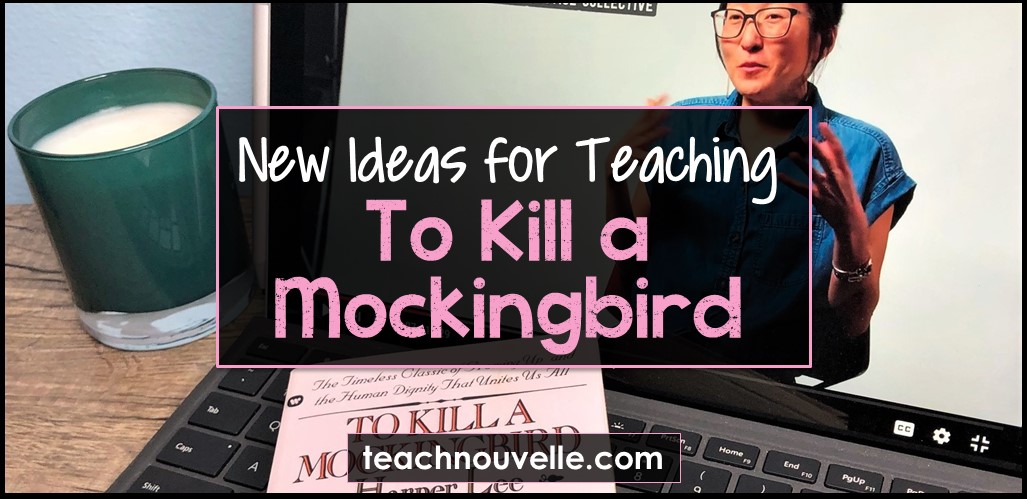
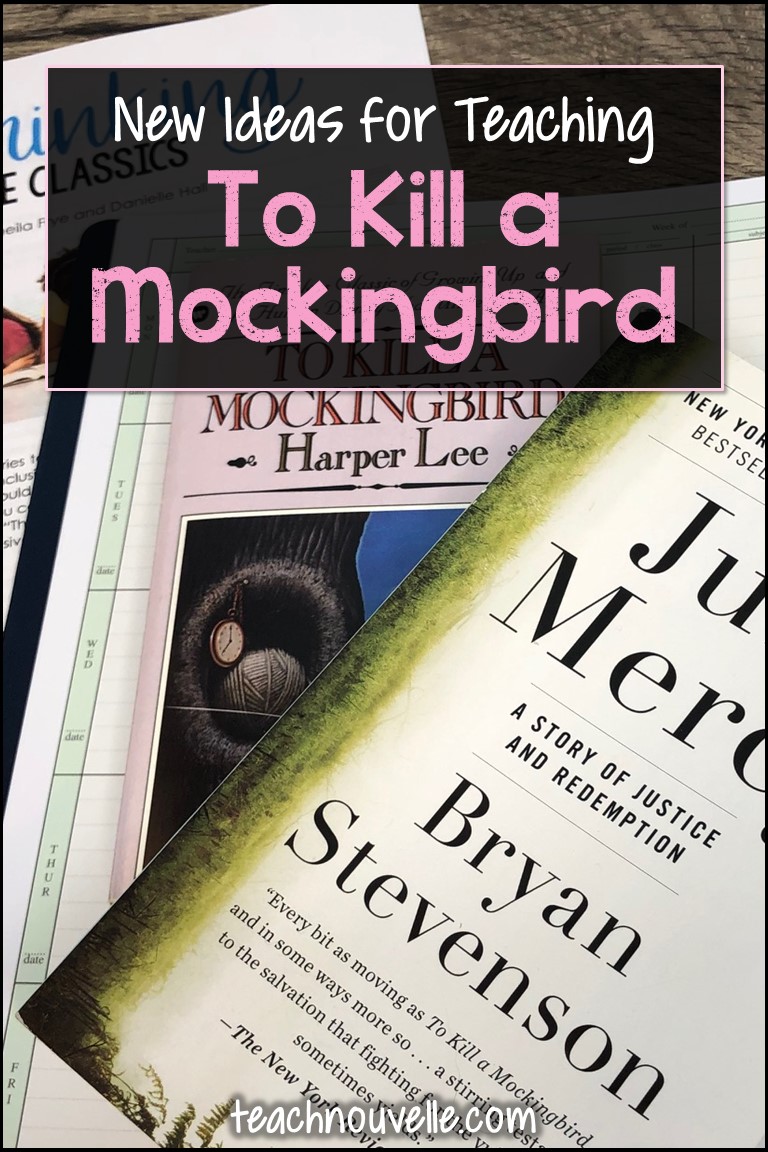
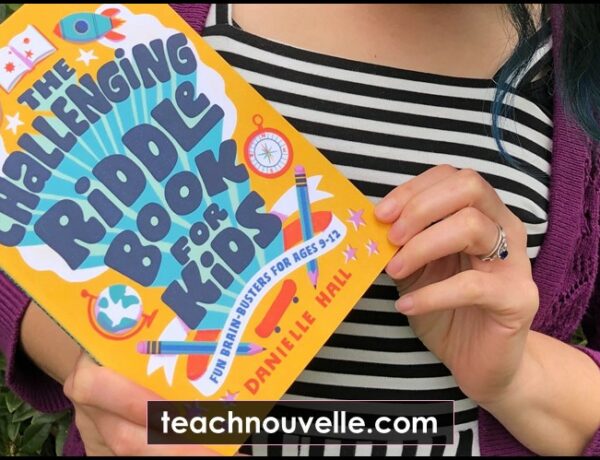
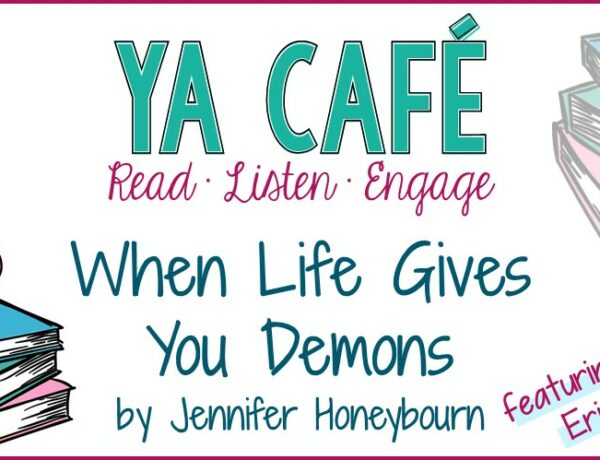
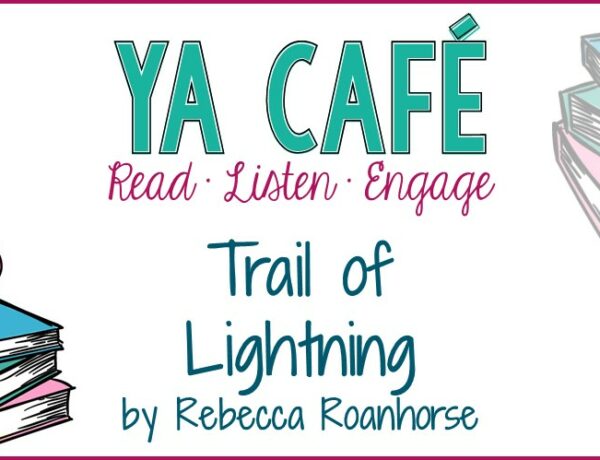
5 Comments
Amanda Ottinger
January 26, 2021 at 3:31 pmI have loved and will likely always love teaching this novel – I enjoyed reading it as a young teenager and I love the book and its story for a number of reasons. However, I wholeheartedly agree that we need to introduce our students to other voices and perspectives – more contemporary versions as well as ones that do not simply perpetuate the white savior trope, as you mentioned. This year, because we could not afford books for students, we are planning on pairing it with the podcast, “Serial.” I am hoping this will allow for some great discussions about justice and other major topics from the novel – but I am also holding onto the hope that our school can afford a more contemporary novel option for next year’s students!!
Amanda Ottinger
January 26, 2021 at 3:32 pmThank you, also, for citing examples we can use from “Just Mercy”. I will be rereading these chapters and poking for a way to incorporate them this year, especially because we always watch Stevenson’s “We need to talk about an injustice”!!
Donnie Phelps
January 31, 2021 at 9:29 amI have been conflicted with this myself – especially in the last couple of years. I have had full-on arguments about whether or not this is a racist text that propagates racial tensions and racist ideals as some might have us believe. For a 1960 world, I do believe that Lee was very progressive with this text. I struggle with the white saviour idea here, though, because Atticus does not save Tom despite his overt confrontation of the deep racism that caused otherwise decent humans (Walter Cunningham, Sr.) to do things that the pervasive racism allowed his own moral compass to abide. I also think that when it comes to racial prejudice that it gets a little too much attention when this novel is taught… it is important, DEFINITELY! But, what about the other marginalized characters… what about Boo who is subject to and of neighborhood gossip and southern lore who is an archetype of all people who are born different or whose disabilities inhibit typical societal and social interactions? What about Mrs. DuBose whose opioid addiction and accompanying withdraws has her prone to violent outbursts, much to the potential detriment of the emotional and social health of the children? What about Mr. Avery who is likely an alcoholic whose substance (ab)use gives way to impolite behaviors like urinating from the porch in the evening and making change in the offering plate on Sundays? What about Miss Stephanie who casts judgment and gossips about everyone else? What about the contrast between the poorest white people – the Cunninghams and Ewells – who teach us that poverty doesn’t equal stupidity, complete ignorance or ill manners? I feel like the Tom Robinson subplot steals the show and maybe it should, but I also see the stratification of society and how Lee created an imaginary southern town and made it a microcosm for society and culture from reconstruction to 1960. I still believe it is rather pioneering on her part and I have always tried to expose all of the other layers, stereotypes, and other aspects of the humanities at work in the text. I do realize that the narrator is a young, white child. But, isn’t that the point? How people aren’t born with hatred or racist ideals and they are learned? She is trying to make sense of the world around her and her dad is trying to keep her from “catching Maycomb’s usual disease”. I always thought that was the point – an older narrator wouldn’t question society or behaviors and reactions (s)he observes, but a young child, still full of innocence and wonder, would do that. It may be dated and there may be newer texts from authors of color that are equally or more valid and meritorious, but I don’t think that discounts Lee’s text. It is true that culture is like a tree and in many cases when we look upon another culture, we cannot see past the leaves because the cultural nuances and what it is like to be part of the culture are so rooted and require an intimate knowledge of the culture, but without being a part of the culture in every sense we can never truly understand or feel it. Going into next year, we have already begun conversations about using Just Mercy as an alternative. I am also interested in having literature circle groups and increasing the exposure to many other texts like Brown Girl Dreaming, Born a Crime, and more. I guess this novel to me is more about being a marginalized outlier in society and the Boo Radley plot is the one that really gets me. I hate the prejudice and racism, don’t get me wrong. I think it’s that the hatred Tom experiences is explainable because the society of the time had the words for it – it was harsh racism and ignorance. With Boo, the 1930’s pre-DNA discovery world would have hidden someone like him away or would have institutionalized him. By the 1960’s dangerous treatments were employed for mental health problems or problems perceived to be mental-health related. Lobotomies and electro-shock therapy amongst them, Boo is even described to have the discoloration about his temples, suggesting that he may have endured some of that. I get emotional in the end when the narrator describes how neighbors come to call with illness and death and give flowers, food, etc., but from her first time on the Radley porch that night she sees her whole world from a different perspective and recognizes that Boo wasn’t the malevolent phantom of the neighborhood gossip, but rather their neighbor and amongst the gifts that he had given them (pennies, gum, pocket watch and knife, two soap dolls, twine), he gave them the greatest gift a neighbor could give them: their lives. Prejudice is largely born out of fear of what’s unknown or different and that breeds ignorance. With the fear of Boo lifted, in the ironic end, Scout pieces together that the thing (which is actually a person although she didn’t see him that way until the end) that she feared the most was actually her saviour. I don’t know… I loved this BLOG post. It was informative and insightful and it gives me so much perspective. I have had unpleasant conversations about this text and teaching it in the past. I do not wish to debate it because I completely understand the premise of moving past this classic novel. I just am so in wonder of why all of the other injustices, oppression, and stereotypes of marginalized characters is never really discussed or spoken about. I think tamping out the mistreatment and stigmatization of societal outliers – developmentally or learning disabled and addicts chief among them – is just as worthy of our time and attention as eradicating systemic racism. Freedom and justice for all is supposed to mean everyone and like Dr. King said, it is like a bad check – those guarantees to all aren’t worth the paper in which they are printed if they aren’t actualized in the eyes of society at large. Word and deed are different things… so the bigger essential question is why in 2021 are we still having to have the same conversation that Lincoln and King were having 100 years apart beginning about 100 years after the birth of this nation? And more than that, what are we going to do to resolve it or at least make it better now? I guess the answer for ELA classrooms is to bring new voices to these age-old problems and help our children of color or those who otherwise feel a sense of being outliers see themselves in the protagonistic roles of our stories. I love mockingbird and unpacking it with kids and seeing the ah-ha moments, but I am confident that I can achieve the same with other texts, too, and therefore I am not opposed to considering new whole-class novels. Thank you for these perspectives and resources.
Deana
March 26, 2024 at 7:05 amI did not want to teach TKAM to my English 1. I also felt it was outdated and one sided. I stumbled across your blog because I will be teaching Just Mercy the last 9 weeks and was looking for information to supplement my lessons. I am very excited about teaching this novel. I love the fact that it is non-fiction and showcases an African American as the core leader of the story. I know that it is easy because it is based on truth. I am a white teacher (in case anyone wondering and not that it matters). I am looking forward to the conversation that I am hoping it will create. There was a guy locally who was convicted of a crime he did not commit and was eventually released and another one in our city who is fighting to be released so it will be interesting to many students to know that this happens in our own backyard and is not just for books and movies.
Carina Assayed
March 26, 2024 at 2:47 pmDeana, thank you so much for sharing! I appreciate that you, too, feel a more representative and robust conversation can be had with Just Mercy. I can imagine with the local case you shared that this will, unfortunately, resonate with students on a more personal level. I am glad that they will have your support in guiding these critical conversations!
Wishing you a great experience teaching Just Mercy in the coming weeks!